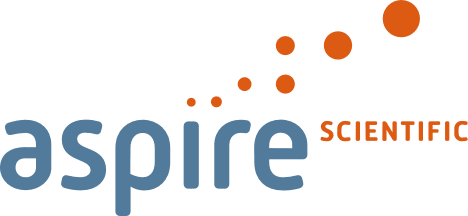The 2025 European Meeting of the International Society for Medical Publication Professionals (ISMPP) was held in London on 27–29 January. The meeting, which was themed ‘Core Values for an Integrated Age’, saw a record-breaking 418 delegates in attendance.
A summary of the first day of the meeting is provided below to benefit those who were unable to attend the meeting, and as a timely reminder of the key topics covered for those who did.
Summaries of Day 1
Chair’s welcome, CMPP update and ISMPP presidential address
KEY TAKEAWAYS
- Attendance and engagement at ISMPP EU continue to grow, reflecting an active and collaborative community of medical publications professionals.
- ISMPP’s core values are fundamental as the industry embraces innovation and integrates new technologies.
- The CMPP programme celebrates 15 years of excellence, with increased global representation and accessibility.
Mithi Ahmed-Richards (Taylor & Francis) opened the 2025 European Meeting of ISMPP, recognising the continued growth of the meeting with increasing numbers of abstract submissions and poster presentations. Acknowledging the collaborative spirit of the medical publications community, she emphasised how ISMPP and its members drive advancements in publication practices and ultimately improve patient care. Noting the meeting’s theme of Core Values for an Integrated Age, Ahmed-Richards stressed that trustworthiness surpasses skill and that core values must be demonstrated through actions.
Ann Gordon (Chair of the ISMPP Certification Board) provided an update on the Certified Medical Publication Professional (CMPP™) programme, which is celebrating 15 years of professional excellence in medical publications this year. The CMPP community has grown to 1,659 professionals across 31 countries, spanning 6 continents, with South America most recently represented. Achievements in 2024 included the launch of the LearningBuilder certification platform, a significant rise in CMPP mentors, and enhanced accessibility through financial assistance for exam fees. Gordon reinforced the value of the CMPP credential in demonstrating expertise, leadership, and ethical publication practices.
Expanding on the meeting’s theme, Rob Matheis (ISMPP President and CEO) emphasised the importance of balancing core values with innovation, citing the need to consider evolving information sources beyond traditional medical journals. He outlined ongoing key initiatives of the society, including patient membership programmes, a renewed presence in the Asia-Pacific region, and the hosting of #MedComms Day. Matheis concluded with a call for members to actively engage in ISMPP activities to further strengthen the community of medical publication professionals.
Keynote: Finding core values in an integrated and sustainable world
KEY TAKEAWAY
- Andy Pag’s sustainable travel experiments highlight the power of incremental progress and the importance of clear communication in environmental advocacy.
Exploring sustainability: insights from Andy Pag’s adventures
Former BBC journalist and engineer Andy Pag shared his two-decade journey of pioneering sustainable travel. Though often labelled an environmentalist, Pag considers himself an experimenter seeking practical solutions.
Innovative expeditions
Pag’s first major sustainability experiment involved driving from London to Timbuktu in an old Land Rover powered by biodiesel made from waste chocolate. This was considered the first-ever carbon-negative expedition. He later organised the “Grease to Greece” rally, where participants scavenged waste vegetable oil from restaurants to fuel their cars, successfully completing the journey from London to Greece without fossil fuels.
Building on these experiences, Pag set out to travel around the world using sustainable transport. He restored an old school bus and adapted it to run on waste oil, successfully completing the journey while highlighting the potential of alternative fuels.
Lessons in communication
Pag transitioned from experimenter to advocate, emphasising the need for precise messaging. He cautioned that achievements, if not communicated thoughtfully, can be misinterpreted—an insight particularly relevant to medical publication professionals.
The Hero’s journey and scientific method
Pag drew parallels between the hero’s journey—a narrative arc involving a call to adventure, challenges, and transformation—and the scientific method. Both involve exploration, overcoming obstacles, and sharing newfound knowledge.
Trust and incremental progress
Throughout his travels, Pag learned to trust in the kindness of strangers, such as a voluntary military escort in Afghanistan. He advocates for celebrating small advancements in sustainability, recognising that incremental steps collectively lead to significant progress.
Personal choices for reducing carbon footprint
Pag suggests three actions: making sustainable lifestyle choices, supporting policies through voting, and fostering scientific literacy. His experiences serve as a testament to the impact of innovation, communication, and small steps in tackling environmental challenges.
Pag advocates for celebrating small advancements in sustainability, recognising that incremental steps collectively lead to significant progress.
Looking beyond traditional authorship: partnering with patients for inclusion in scientific conferences
KEY TAKEAWAYS
- The role of the patient at scientific conferences has evolved, from exclusion to tokenism to leadership.
- Patients are not conference “guests”, but expert partners helping to shape the future.
The time has come to evolve beyond tokenism and acknowledge patients as experts in their own right.
The first plenary session of the day explored the evolution of patient participation in scientific conferences, from exclusion to tokenism to active leadership. One such leader is patient advocate Mercy Shibemba, who shared her experience of growing up with HIV and the associated stigma. She highlighted the principle of “Nothing for us without us”, and underscored that seminal campaigns such as Undetectable = Untransmissible would not have been possible without meaningful patient engagement.
Amanda Boughey (Envision Pharma Group) reflected on the evolution of patient engagement at ISMPP itself, noting the significant progress made since she started working in MedComms 20 years ago. However, challenges remain: results from an interactive quiz during Boughey’s presentation revealed that the biggest perceived barrier to patient involvement at scientific conferences is concerns around compliance.
Enter self-described “compliance nerd” Rina Newton (Code Clarity). Newton clarified some of the misconceptions surrounding patient participation at scientific conferences, for instance, while EU regulations prohibit direct-to-patient drug advertising, this does not preclude patients from attending conferences, where they may:
- learn about trial findings
- interact with other attendees
- engage with medical stands
- ask questions about medicines
- speak at symposia
- give advice on advisory boards.
Simon Stones (Amica Scientific) stressed the need for stakeholders to proactively argue for patient involvement at conferences, citing the European Alliance of Associations for Rheumatology (EULAR) congress as an example of good practice. Specifically, we should:
- move beyond tokenism—patients should not be viewed as congress “guests”, but as equal partners shaping the future
- invest in patient leadership
- build a culture of respect by normalising patient involvement
- measure impact.
It should be noted that patient-driven impact metrics may differ from conventional measures of success. Shibemba gave the example of a study of youth-friendly health services for people with HIV that failed to achieve its primary outcome (viral suppression), but was considered successful from the participants’ perspective as it demonstrated the importance of integrated health services.
Pascale Cavillon (Ipsen) explained Ipsen’s patient-driven approach starts with the “why”, using early engagement with patients to establish their unmet needs, before collaborating with patient communities to translate science into meaningful solutions. Cavillon highlighted initiatives such as immersive experience training for healthcare professionals to highlight the lived reality of rare disease.
All panellists agreed that the time has come to evolve beyond tokenism and acknowledge patients as experts in their own right.
Sustaining publication quality in a fast-paced world
KEY TAKEAWAY
- Fast-tracking publications should be reserved for cases of strong justification, and require early, meticulous planning across pharma teams, authors and journals to ensure success.
Expedited publications have become increasingly common, with timelines shrinking from the standard 6 months to as little as 1 month. However, maintaining publication quality requires careful planning, resource allocation, and compliance with Good Publication Practice (GPP) guidelines. During this plenary session, panel members Demetrios Michael (OPEN Health), Karen King (OPEN Health), Sandrine Hardouin (Alexion), Margarita Lens (UCB), Saurabh Gagangras (Novo Nordisk) and Sam Cavana (Taylor and Francis), discussed how to balance speed, quality and compliance when accelerating publication timelines.
Foundation setting
Gagangras likened expedited publications to a dance performance—months of preparation for a precise and rapid execution. Strategic alignment across internal teams is critical. Early engagement with key opinion leaders ensures they are committed to a highly responsive process, while upfront logistical planning—such as completing authorship agreements and pre-submission inquiries—helps avoid delays.
Medical writers should be onboarded early and cover across time zones should be considered. Pre-drafted shell manuscripts and mock figures can allow blinded investigators to review content before database lock. Clear contingency plans for different data outcomes can also help streamline the publication process post-readout.
Compliant author review
Maintaining compliance while expediting timelines requires a structured yet unconventional review process. The panel highlighted the importance of kick-off meetings that clearly define expectations and review timelines, ensuring authors can accommodate shortened deadlines.
The panel also discussed the utility of live review calls to resolve conflicting feedback, and securing calendar dates for these well in advance. Detailed meeting minutes can ensure transparency and compliance while maximising efficiency. Additionally, pre-selecting secondary journal options and understanding the required adaptations in case of rejection helps minimise delays to final publication.
Navigating journal liaison
Cavana provided a publishing perspective on the process. He emphasised that engaging with journals early can smooth the submission and peer review process, but challenges remain, especially in securing reviewers. Cavana advised attendees to consider their use of artificial intelligence (AI) carefully, as well as the adaptability of any potential digital extenders. Journal policies on these aspects can vary widely and might hinder publication or delay the process.
The exception, not the rule
There was unanimous agreement from the panel that expedited publications should remain reserved for cases with strong justification. Examples include areas of unmet needs, Phase III trials supporting regulatory submission, first-in-class drugs, or paradigm-shifting treatments. Fast-track publishing places significant demands on resources and may disrupt ongoing publication plans. Managing stakeholder expectations is also crucial to prevent unrealistic timelines from becoming the norm.
The role of AI
The panel highlighted emerging AI applications could assist the process in the future, and some success has already been demonstrated with plain language summaries (PLS). Other potential uses, such as automated reference management and data validation, are being explored but require further validation to ensure compliance with journal disclosure policies.
Conclusion: need for speed?
Success in fast-tracking publications involves meticulous preparation, structured review processes, and effective stakeholder communication.
Success in fast-tracking publications involves meticulous preparation, structured review processes, and effective stakeholder communication. While they can accelerate data dissemination, substantial effort is required to balance speed with quality and compliance. It is critical that that these timelines are reserved for rare cases for which there is strong justification.
A discussion on use cases and the adoption of AI within a pharmaceutical, biotech or device company
KEY TAKEAWAY
- Insights from industry highlight AI’s potential to enhance efficiency, quality and value in MedComms.
James Wright (Bioscript Group) led a discussion on the adoption of AI in MedComms with panel members, Pippa Hadland (AstraZeneca), Tom Grant (UCB) and Swati Krishnan (Boehringer Ingelheim). The aim of the session was to further delegates’ understanding of how to use AI in MedComms, by providing insights from the industry perspective.
AI is all around us, but what is it?
Wright opened the session by explaining what AI is. Simply put, AI allows computers and machines to simulate human learning. Indeed, most of us already use AI in our everyday lives, through navigation systems such as Google Maps, virtual assistants, education, and personalisation of online shopping, social media, and online entertainment.
Generative AI can create original content (text, images, video, audio) in response to users’ prompts. Natural Language Processing brings computer science, AI and linguistics together, “enabling computers to understand, interpret, and generate human language in a meaningful and useful way”.
AI in MedComms: panel insights
Several key themes emerged as the panel shared their experiences of developing and using AI for MedComms:
- Use cases – examples of AI tools developed and utilised by panel members included predominantly “low security risk” deliverables such as systematic literature reviews, PLS, and a manuscript first draft proof of concept using published secondary clinical data.
- Efficiency – AI can free-up employees’ time for more strategic tasks while it does the heavy-lifting, eg, summarising large documents, researching new therapy areas, finding details quickly within large quantities of information, or even collating overarching views from 1000s of HCP’s comments in social media.
- Prompts – Wright emphasised that “we get out what we put in” to generative AI, and well-structured prompts are key. UCB have an app that helps with prompt development, and AI can even be prompted to suggest better prompts!
- Quality – while quality may be a common concern, panel members found comparable quality between AI- and human-generated content.
- Value – time-saving with AI may allow budgets to go further, meaning better value for money.
- Data security – maintaining zero risk to patient data, and transparency, are both vital. Security infrastructure around AI is still in its infancy, and represents a challenge, therefore most panel members developed AI tools in-house using closed systems, for “low-risk” projects.
- Industry/agency collaboration – logistical challenges around transparency and security mean that some panel members have kept AI use in-house, while others have formed successful partnerships with trusted vendors.
- Training – experience of AI training comprised a mixture of self-learning through experimentation and online resources, and structured learning through company courses.
AI can free-up employees’ time for more strategic tasks while it does the heavy-lifting. In the future it will likely move beyond low-risk projects to include proprietary data and a wider scope of deliverables.
What does the future hold for AI in MedComms?
With many companies already testing out AI, in the future it will likely move beyond low-risk projects to include proprietary data and a wider scope of deliverables such as infographics or video content. If one thing is clear from this session, it is that AI in MedComms is here to stay.
Roundtable sessions
Attendees then had the opportunity to participate in roundtables, which covered the following topics:
- Shaping the future of publication metrics
- GenAI in the real world
- AI in scientific publishing: overcoming barriers and bridging perspectives across sectors
- Use of social media in an integrated age
- Inclusive innovation: building a more accessible future in medical education
- Improving publication strategies: bridging standard approaches with innovative, proven frameworks
- Demystifying the submission & guidance for standalone podcast & video articles and extenders
- Cross-publisher plain language article guidance: have your say
- What defines a publication as ‘best-in-class’?
- Strategies for integrated evidence generation throughout product lifecycle: role of the publication professional
- Unlocking omnichannel success: crafting scientific narratives tailored for audiences and persona
- Reformat or reform? Evolving manuscript submission processes to put science first
- Pursuit of parallel publication: potential benefits and current challenges of this growing practice
- Empowering patients in an integrated age: a multidisciplinary approach
- The people’s PubMed: empowering patients in the age of misinformation
- Leveraging AI beyond content creation: creating efficiencies and unlocking possibilities
- Intellectual property and ethical integrity in the digital age: safeguarding publications through collaboration and innovation
- ISMPP code of ethics update: sneak peek and discussion
Guided poster tours
Attendees also had the opportunity to attend guided poster tours of the following posters:
- Analysis of oncologists’ anticipation of and response to clinical data dissemination at ESMO 2023 and ESMO 2024
- Transforming poster metrics: a low-cost, privacy-preserving solution to measure engagement of posters
- Establishing a lay review panel to ensure medical research accessibility
- Practical recommendations for the wider implementation and reporting of sex-specific analyses in medical publications
- Sins of the father: current medical guidance based on retracted articles in the literature
- Beyond agreement: how is non-consensus handled in Delphi panels?
- A survey of the experience, motivations, and added-value of freelance medical writing professionals
Hackathon activity: shaping the future of GPP together!
KEY TAKEAWAY
- Industry-wide collaboration is essential for refining GPP, focusing on AI integration, patient authorship, real world evidence, and enhancing equity, diversity, and inclusion.
In this interactive session, attendees collaborated in groups to explore gaps in GPP 2022 guidelines and discuss key considerations for future GPP iterations, focusing on 6 key topics:
Advancements in AI
Discussions delved into the anticipated impact of AI on medical publishing by 2026. Key recommendations were to:
- define the balance between AI and human authorship, with explicit author agreements
- establish AI disclosure requirements and ethical risk assessments
- ensure AI compliance with confidentiality standards (open vs closed systems)
- adapt GPP guidance to keep pace with rapid AI evolution while maintaining professional oversight.
Defining publication metrics
Participants examined the evolution of publication metrics, questioning whether existing measures effectively capture engagement and impact. The importance of identifying meaningful metrics, highlighting gaps, and ensuring accurate interpretations of publication success were highlighted.
Enhancing patient involvement
The best way to integrate patient involvement within GPP guidance was discussed. Key considerations included:
- whether to consolidate patient guidance in a dedicated section or distribute it throughout GPP
- establishing onboarding materials to support patient authors
- clarifying compensation terms to avoid legal and ethical conflicts
- ensuring patient involvement is meaningful and adds value to publications.
Integrating real world evidence (RWE)
Challenges in publishing RWE studies include perception of lower impact, delayed relevance by the time of publication, and complex statistical analyses. Solutions proposed by participants were to:
- strengthen collaboration between RWE study teams and internal stakeholders
- incorporate RWE studies in early-stage research planning
- provide dedicated statistical expertise to ensure robust data analysis.
Promoting equity, diversity, and inclusion
Discussions underscored the need to embed equity, diversity, and inclusion principles in GPP updates, and recommendations were to:
- use existing journal lexicons to ensure inclusive terminology
- advocate for regional representation in steering committees
- create a congress checklist to evaluate equity, diversity, and inclusion representation in medical meetings
- hold pharma companies accountable for diverse authorship selection.
The expanding role of social media
Participants supported broader use of social media but stressed the need for clear, industry-wide guidelines on best practices and regulatory considerations.
Participants supported broader use of social media but stressed the need for clear, industry-wide guidelines on best practices and regulatory considerations.
Eline Hanekamp, co-author of the GPP 2022 guidelines, closed the session by emphasising the growing role of AI, the importance of patient involvement, and the evolution of publication metrics. The insights gathered at the Hackathon activity will be presented to the GPP steering committee for consideration when developing the next iteration of GPP.
Finding the story in data: blending data visualisation, storytelling techniques, and new trends while still upholding core values in medical publications (sponsored and presented by HCG)
KEY TAKEAWAY
- Effective storytelling and visualisation techniques enhance data comprehension, making complex information more accessible while maintaining scientific integrity and core values.
Tobias Sturt (Add Two Digital) delivered an insightful talk on the role of storytelling and data visualisation in effectively communicating complex information. The session explored how narrative techniques and visual structure can enhance data interpretation, particularly in medical publications, while ensuring adherence to scientific rigour and ethical standards.
The importance of storytelling in data
Sturt emphasised that the volume and complexity of data in the medical and scientific fields are increasing rapidly. Effective storytelling helps cut through this noise, making information more impactful, understandable, and retainable. Visual storytelling is not about manipulating data but about framing it in a way that clarifies meaning while upholding credibility and trust.
Additionally, he noted that while numbers alone present facts, they often fail to engage audiences. A well-structured story provides context, improving relatability and retention of information. This is particularly critical in medical publications, where complex data must be clearly communicated to diverse audiences.
Principles of data storytelling and visualisation
Understanding the audience’s background and expectations is crucial. Data should be structured like a narrative, focusing on key insights to prevent information overload.
Understanding the audience’s background and expectations is crucial. Data should be structured like a narrative, focusing on key insights to prevent information overload. Selection and emphasis ensure that only the most relevant findings are highlighted. While data itself is factual, effective communication evokes emotions that make information more memorable. Using visual structuring techniques such as contrast, positioning, and colour helps guide the viewer’s attention, ensuring clarity and engagement.
Sturt also stressed the need for progressive disclosure—gradually introducing layers of information rather than presenting everything at once. This allows readers to build understanding step by step, making even highly complex data sets more digestible. Balancing simplicity and depth is key to effective storytelling.
The process: find, design, make, refine
Sturt introduced a four-step methodology for data storytelling:
- Find – identify the core message within the data.
- Design – develop a visual framework to present the story effectively.
- Make – create the actual data visualisation.
- Refine – test and iterate to improve clarity and impact.
This process ensures that visual storytelling remains purposeful and effective, avoiding the common pitfall of overloading graphics with unnecessary elements that detract from the main message.
Applying visual storytelling in medical publications
Sturt concluded with practical applications for medical and scientific publications, highlighting the importance of maintaining core values such as transparency, accuracy, and ethical responsibility. He discussed ways to ensure clarity in figures and graphs, use infographics to summarise key findings, and adapt storytelling techniques to align with evolving publication formats while preserving scientific rigour.
He also emphasised the role of emerging technologies, such as interactive visualisations and digital platforms, in modern medical publishing. These tools offer new ways to engage readers and convey complex findings dynamically while maintaining the credibility that medical communication demands.
The power of data-driven storytelling
Combining storytelling with data visualisation makes complex medical data clearer and more engaging. Aligning these techniques with ethical standards maintains credibility. As data visualisation evolves, leveraging new storytelling methods while staying true to core values will be essential for enhancing the impact of medical communications.
Written as part of a Media Partnership between ISMPP and The Publication Plan, by Aspire Scientific.








